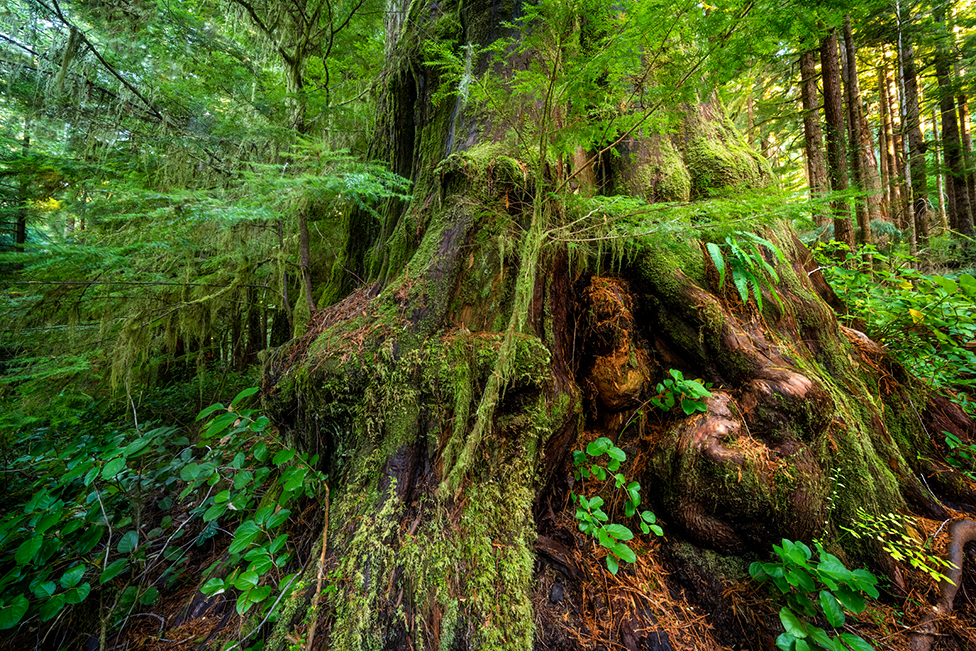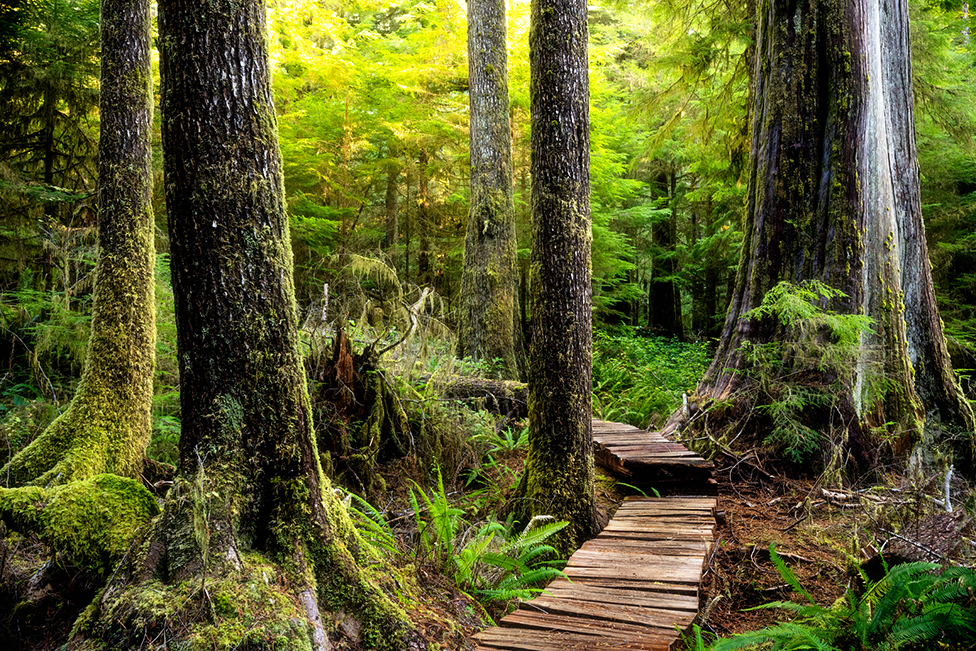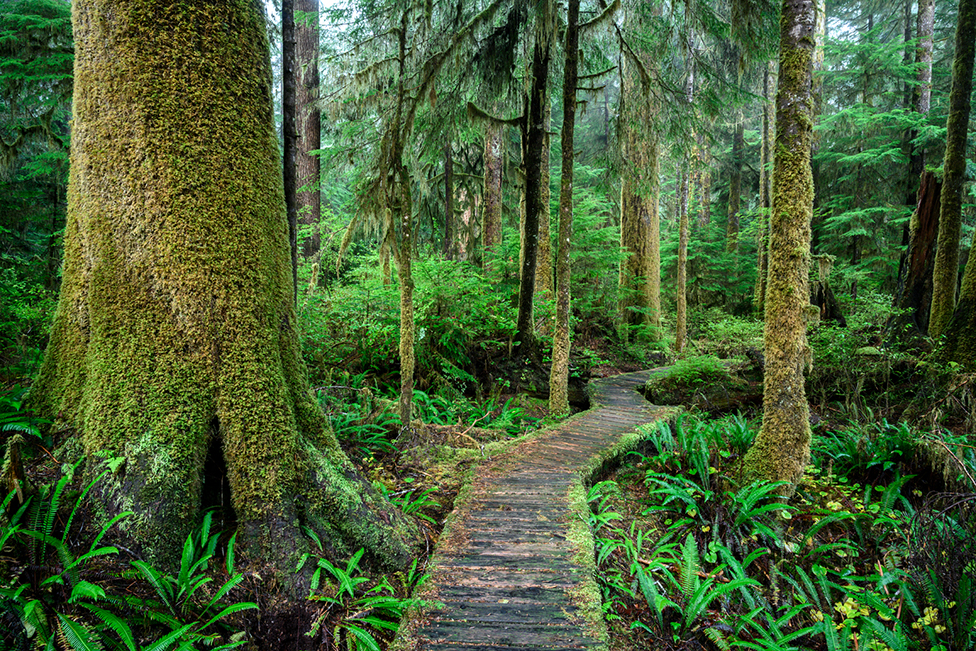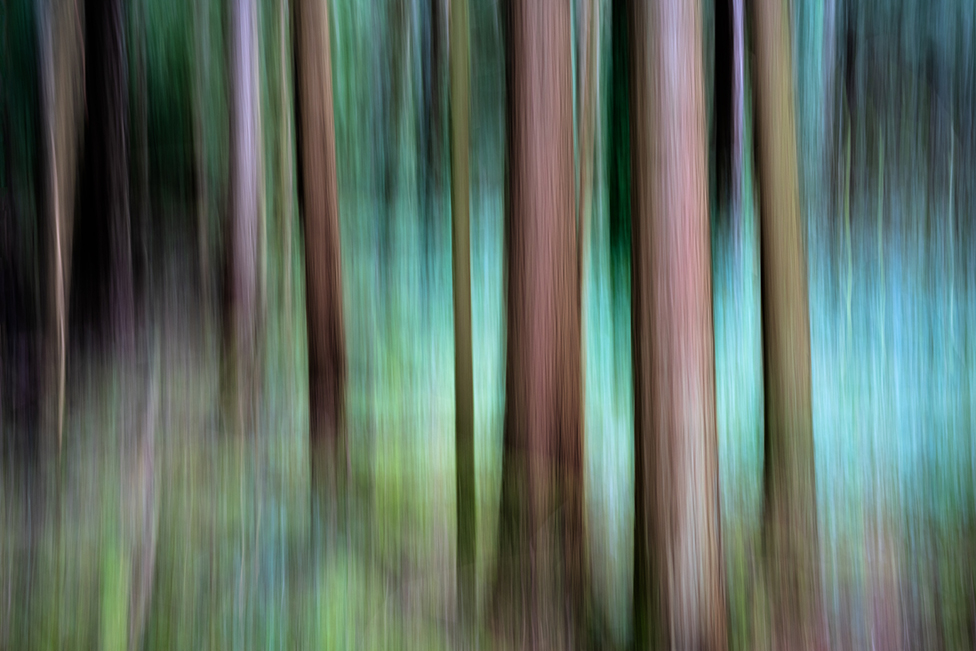Tuesday, December 7, 2021
TIPS FOR FOREST AND FOLIAGE PHOTOGRAPHY
Submitted by Dave Hutchison I have been photographing and exploring the forest on Vancouver Island for over ten years. Like any genre within photography, there are some tips and tricks that are valuable for the getting the best possible images from the forest.
- I cannot emphasize this one enough. Use a tripod. A carbon fiber tripod would be my first choice over an aluminum tripod. But why? A few reasons. A carbon fiber tripod is lighter and absorbs more shock than a less costly and heavier aluminum counter-part. However, the most interesting factor is the temperature of the tripods compared to each other. An aluminum tripod is almost always colder to touch and can make your photo session more of a challenge especially if you forgot your gloves. Forests can be damp and cool, and your carbon fiber tripod will be easier on your hands. I recommend the FLM Canada brand of tripod. Info can be found on my web site at https://davehutchison.ca/affiliates/
- Use a polarizer in the forest. I would say 90% of my forest images are taken with a polarizer. A polarizer is a wonderful method to increase saturation, and provide reflection control, especially on wet foliage, damp boardwalks, wet bark, etc. Sometimes a polarizer blend is necessary if only part of the scene can be polarized in a single shot due to the angle of the sun and amount of moisture on the foliage such as leaves. This method requires two different rotations of the polarizer in two or more images, and then manually blend together in PS using layers (reveal and conceal technique).

f/10, 1 sec, ISO 800 – Singh-Ray filters LB warming polarizer (2 image polarizer blend)
- Don’t be concerned if you have to boost the ISO to get an acceptable shutter speed to freeze unwanted movement, if any in a forest scene. The forest can often be very calm, but on the days you are there, the wind can pick up. If you want sharp images, time to boost the ISO.
- I usually start at f/10-f/11 for depth of field if the scene has a larger expanse. I’m not concerned if the background in the distance is not razor sharp since the eye does not see it that way. I aim for sharpness and focus through depth of field for what I feel would normally be seen by the human eye. If you want more depth of “focus”, perhaps try a focus stack. But be aware, they are tough to do in the forest when there is even the slightest of movement.

f/10, .8 sec, ISO 800 – Singh-Ray filters LB warming polarizer
Filters I recommend, along with discount codes can be found at https://davehutchison.ca/affiliates/
- Slow shutter speeds can work fine in the forest if it is calm. It is not uncommon to photograph the forest at shutter speeds between 1-10 seconds. As a bonus the ISO can be reduced resulting in improved sharpness and overall image quality. Conditions are very important.
- If you can’t get everything you see in one shot, try a multi-image panoramic. I find stitching together vertical images in PS rather than LR to be the best approach.

f/10, .4 sec., ISO 400, (manual settings, 10 vertical images), Singh-Ray LB warming polarizer
- I nearly always use an exposure delay of 1-2 secs which gives time for the camera to “settle” before taking the shot, especially if the tripod is on uneven ground.
- Use touch screen shooting to help eliminate vibrations. I use this wonderful feature on my Nikon mirrorless camera, and absolutely love it. A great way to get even sharper images than you previously imagined.

f/13, 4 sec, ISO 800 Singh-Ray LB Color Combo Polarizer
- Take extra care to make sure unwanted branches, stones, rocks, etc. are not distracting especially around the edges of your image. Unwanted elements can ultimately turn off a viewer subconsciously.
- Cloudy, overcast days can be fabulous for forest photography providing maximum saturation.
- Tackle the shot! Get low, photograph wide, photograph close up, and look behind you to see what you just missed. Definitely experiment. That is the most fun of all.

f/10, ¼ sec, ISO 100 (Intentional Camera Movement)
Accepted image, 2021 PPOC-BC Image Salon
Dave Hutchison is an award-winning landscape & wildlife photographer based near Victoria on southern Vancouver Island. Dave has been a PPOC member since 2013 and won Best in Class in “Fine Art” at the 2020 PPOC National Image Salon. Dave has three PPOC accreditations – nature, pictorial/floral, & wildlife. Dave is also an International Brand Ambassador for Singh-Ray Filters based in Florida (discount coupon code dhi15 for 15% off at checkout at https://singh-ray.com. Dave leads multi day workshops for landscapes & wildlife photography on the BC coast & The Great Bear Rainforest. Dave also offers webinars & private Zoom sessions around the globe on Long Exposure Photography – “The Art of Seeing What You Can’t See”. Details can be found at https://davehutchison.ca/






